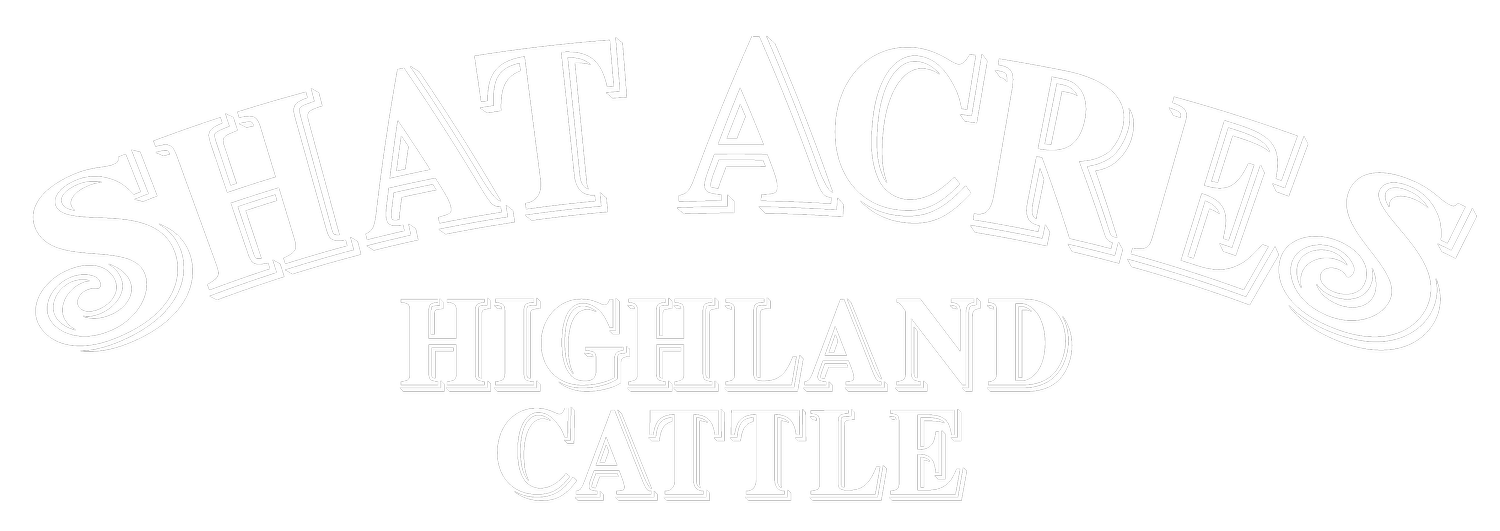Highlander Farming in the Hills of Plainfield
The high ridge on Plainfield’s East Hill upon which Ray Shatney and Janet Steward’s Highland Scottish cattle munch sweet summer hay might be thought by some as a quiet place to retire and reflect. Ray and Janet, in whose diligent care these magnificent long-horned animals thrive, certainly have a plethora of reflections, but the many lovers of their unique beef — sold as “Greenfield Beef” — are hoping that retirement is a long way off.
Ray grew up on his grandfather’s farm in Greensboro, later moving to a smaller farm where his father brought the small Highland fold he had built, and where the majority of the herd resides. Grandfather Arthur legendarily had to go to Canada to marry Winona, a full-blooded Abenaki woman. This was, after all, the era of Henry Perkin’s eugenics movement to ‘breed a better Vermonter,’ which entailed the forced sterilization of native women.
Ray’s father Carrol bought the farm from his father near the end of World War II and continued to dairy farm, among many other agricultural pursuits. In the late 1960s, Carrol acquired El Donn’s Lassie, one of Baxter Berry’s registered South Dakota Highland herd. The photo shows a 16-year-old Ray Shatney at the 1969 Champlain Valley Fair with Caroline, one of the offspring of El Donn’s Lassie. The herd is the oldest registered Highland herd in the country, and selling the young, gentle, hand-raised stock is as much a part of Greenfield Beef’s business as the sale of meat.
The animals have both cachet and charisma, their 3-foot-long horns command that; their long, light brown hair as well, which not only serves to keep them warm through the hardest of Vermont’s winters, but also makes a difference in the quality of the meat. Janet explains that the thick coat obviates the need for a layer of fat, so instead of being subcutaneous, the fat is marbled throughout the fine-grained muscle fiber, creating a more tender ‘mouth feel.’ Also a factor in the superb flavor of the meat is their forage. Highlanders are less picky than most cattle and eat most anything.
The rotationally grazed pasturage provides plenty of diverse plants for them, and the pastures have a mowed appearance. Janet explains that all ruminants are grass eaters, not grain eaters, and the healthy fats and conjugated linoleic acids are what make eating this kind of meat different than what one might encounter elsewhere.
A former schoolteacher and recipient of Vermont’s 2002 Teacher of the Year Award, Janet’s passion for the animals is the subject of a ‘FarmHer’ YouTube video. Both she and Ray hold forth every other week at the Capital City Farmers Market in Montpelier, where, if they’re not too busy, you can become more educated about sustainable responsible stewardship of land and animals. You also can pre-order pickup and buy Greenfield Beef at Hunger Mountain Coop.
Ray is in his late 60s, Janet just a wee bit older, and they are planning to scale back somewhat in the immediate future and divest themselves of the Greensboro farm to younger farmers. When that transfer happens, they will be cutting back on the numbers of animals they keep, and quantities of this extraordinary product will diminish. They plan to keep the Plainfield herd and focus more on agro-tourism, where visitors will be able to spend time on a working farm and see how local food is raised in a humane and regenerative manner. They plan to remain at the farmers market, where you might get one of Ray’s long tales of days of yore, should you ask a few questions.
Alan LePage is a lifelong farmer on a fifth-generation farm. He served many years as president of the Capital City Farmers Market in Montpelier. He produces a radio program on WGDR/WGDH called the “Curse of the Golden Turnip,” an ‘agricultural talk show’ that airs Sundays, 7–9 a.m.
Source: https://montpelierbridge.org/2021/11/highlander-farming-in-the-hills-of-plainfield/?fbclid=IwAR1iTNDpBXK9NVx1d1YoMdKfZ_CGR0vAIca59Z9A3EJur6OtFel0w22uRrk
